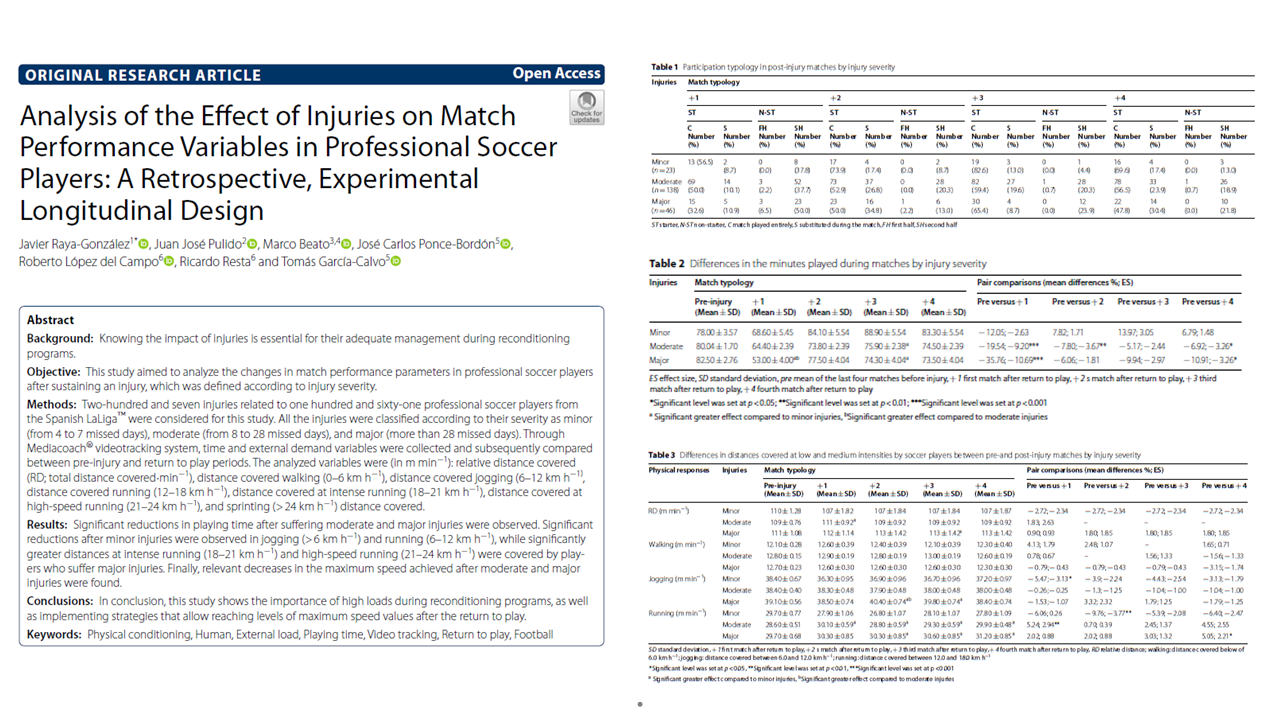
03 Mar Analysis of the Effect of Injuries on Match Performance Variables in Professional Soccer Players: A Retrospective, Experimental Longitudinal Design
Posted at 11:52h
in Paper
Every coach, analyst, or performance staff member knows that an injury is never just about time lost—it also changes how a player performs when they return. This study analyzed 207 injuries in LaLiga players, looking closely at match demands before and after different severities of injury (minor, moderate, and major). Using Mediacoach® tracking, the researchers examined distances covered at different speeds, sprint performance, and playing time across pre-injury and post-injury matches.
Key takeaways for practitioners:
- Playing time is reduced after moderate and major injuries. Players returning from these injuries are less likely to start or complete full matches immediately.
- Minor injuries affect low- and medium-intensity actions. Distances at jogging and running speeds often drop, suggesting incomplete readiness even if the player is back on the pitch.
- Major injuries show mixed effects. Interestingly, players covered greater distances at high-intensity and high-speed running in later matches post-injury, likely reflecting targeted reconditioning work.
- Maximum speed is the big challenge. Both moderate and major injuries resulted in lower peak speeds, highlighting sprint capacity as a weak point during the return-to-play process.
Practical applications:
- Don’t rush minor injuries. Even “small” injuries can compromise jogging and running ability; players should be fully cleared before returning.
- Build match-like intensity and volume. Rehab must progress not just in total minutes but also in relative match intensity (m/min) to ensure readiness.
- Sprint training is non-negotiable. After moderate and major injuries, players need specific sprint exposure to restore pre-injury maximum speed.
- Progressive reintegration. Consider limiting playing time in the first official matches post-injury and gradually increasing load while monitoring performance indicators.
Read the full paper here (DOI): https://doi.org/10.1186/s40798-022-00427-w


